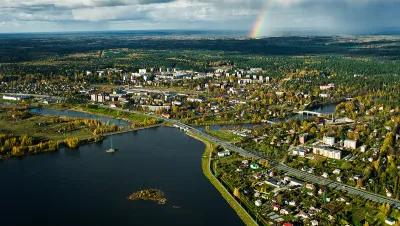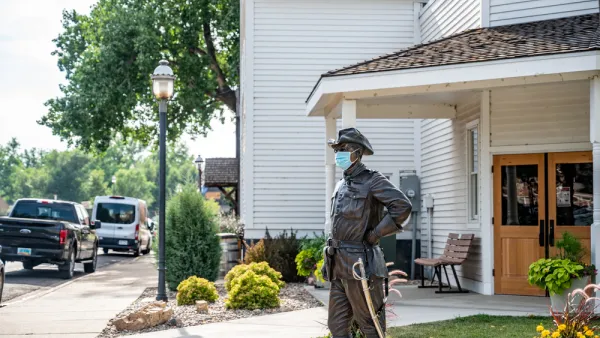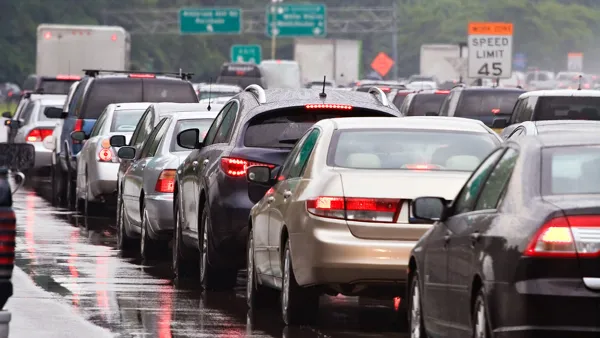As urban economies continue their upward trajectory, residents of counties once considered rural are commuting to cities. This has had both negative and positive effects on the communities in question.

For much of the past century, Hamilton Lombard writes, sprawl drove metropolitan growth. Now it's different. "[...] A major reason for this geographic growth today is that as the urban cores of metropolitan areas have grown larger, they have attracted a rising number of commuters from nearby rural counties, in many cases causing the rural counties to become part of their metropolitan area."
Much has been made of metropolitan corridors comprising urban centers as well as their suburbs and exurbs, which often blend together to form a vast, sprawled-out regional population center. When rural counties join these metro areas, they're often experiencing in-county job losses as many residents stay put and endure longer commutes.
This isn't always a uniformly bad thing. "The shift away from an economy centered on agriculture and manufacturing has been difficult for many communities, but it also has had its benefits. Farming is an unreliable business, dependent on weather and volatile commodity prices. Factories have not always provided stable jobs either."
Highlighting the continued importance of long-distance transportation infrastructure, formerly rural areas can benefit from connections to a wider metropolis. "Though becoming part of a metropolitan area has not prevented job losses in most of these counties, being connected with a larger, more diversified metropolitan economy has typically meant more economic stability than in the past."
FULL STORY: The metropolitanization of rural America

National Parks Layoffs Will Cause Communities to Lose Billions
Thousands of essential park workers were laid off this week, just before the busy spring break season.

Retro-silient?: America’s First “Eco-burb,” The Woodlands Turns 50
A master-planned community north of Houston offers lessons on green infrastructure and resilient design, but falls short of its founder’s lofty affordability and walkability goals.

Delivering for America Plan Will Downgrade Mail Service in at Least 49.5 Percent of Zip Codes
Republican and Democrat lawmakers criticize the plan for its disproportionate negative impact on rural communities.

Test News Post 1
This is a summary

Test News Headline 46
Test for the image on the front page.

Balancing Bombs and Butterflies: How the National Guard Protects a Rare Species
The National Guard at Fort Indiantown Gap uses GIS technology and land management strategies to balance military training with conservation efforts, ensuring the survival of the rare eastern regal fritillary butterfly.
Urban Design for Planners 1: Software Tools
This six-course series explores essential urban design concepts using open source software and equips planners with the tools they need to participate fully in the urban design process.
Planning for Universal Design
Learn the tools for implementing Universal Design in planning regulations.
EMC Planning Group, Inc.
Planetizen
Planetizen
Mpact (formerly Rail~Volution)
Great Falls Development Authority, Inc.
HUDs Office of Policy Development and Research
NYU Wagner Graduate School of Public Service





























